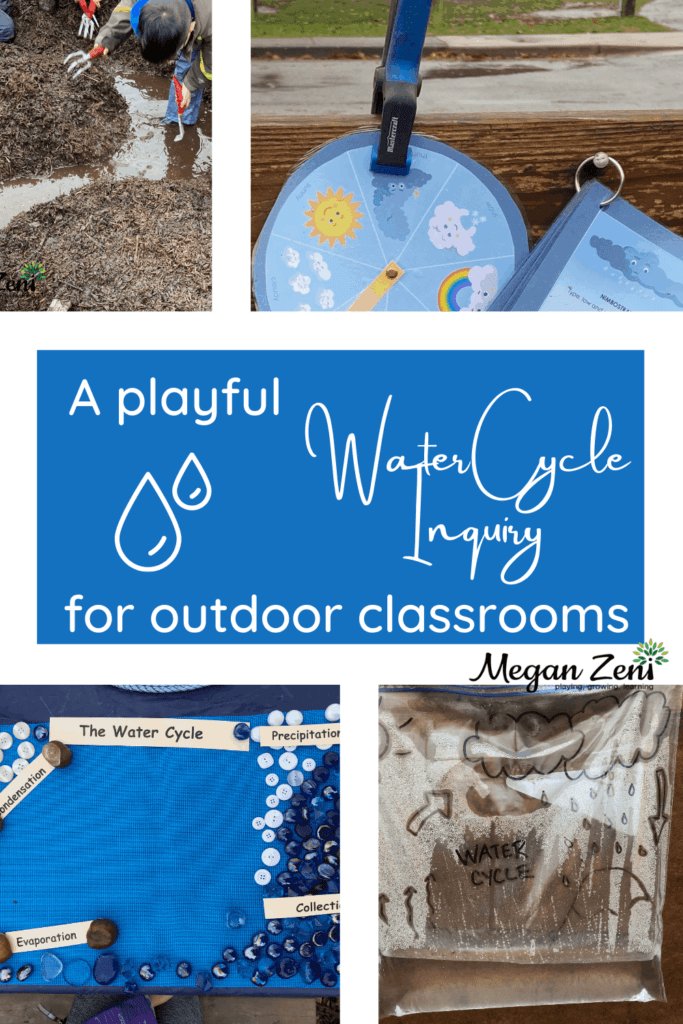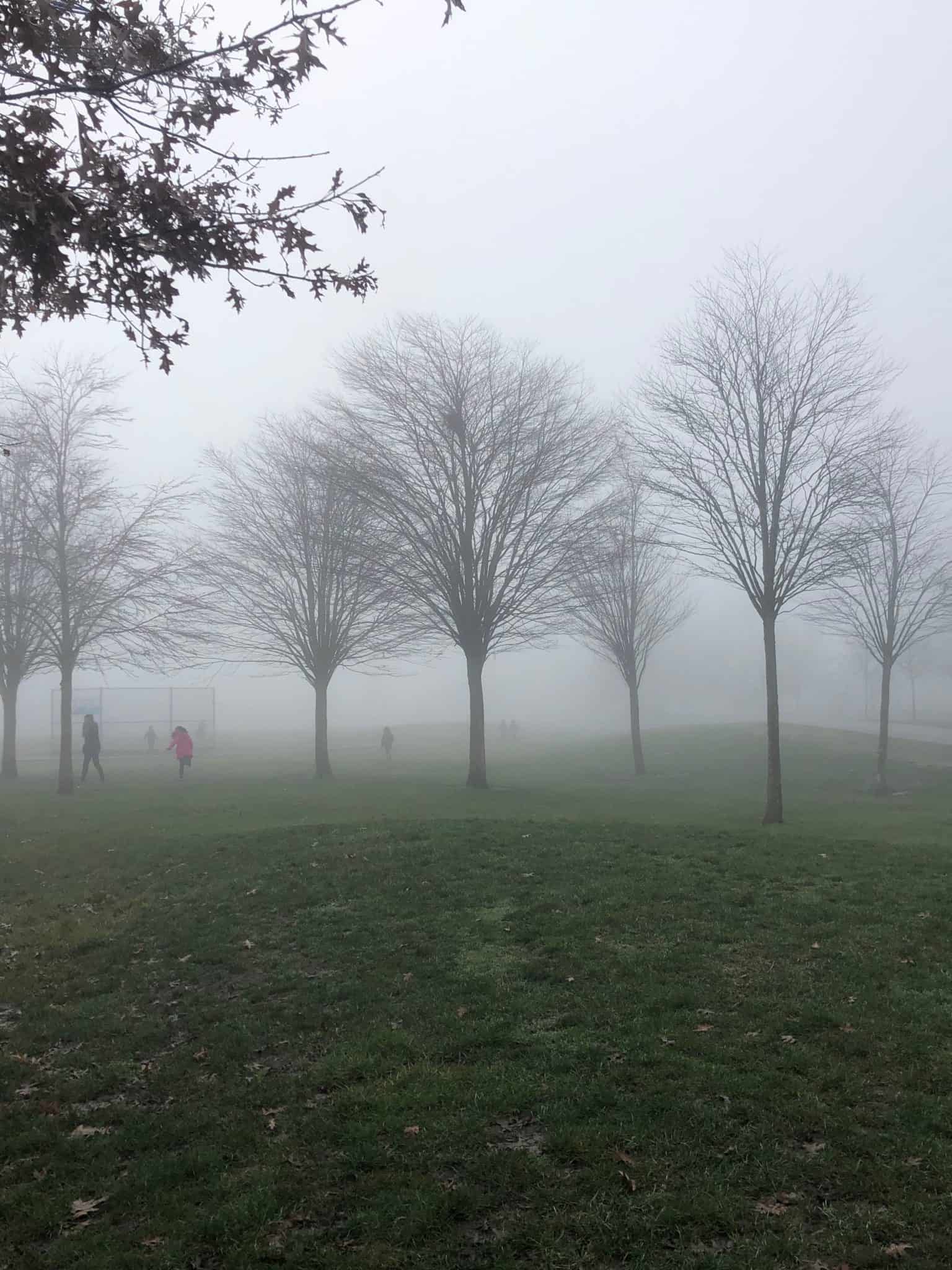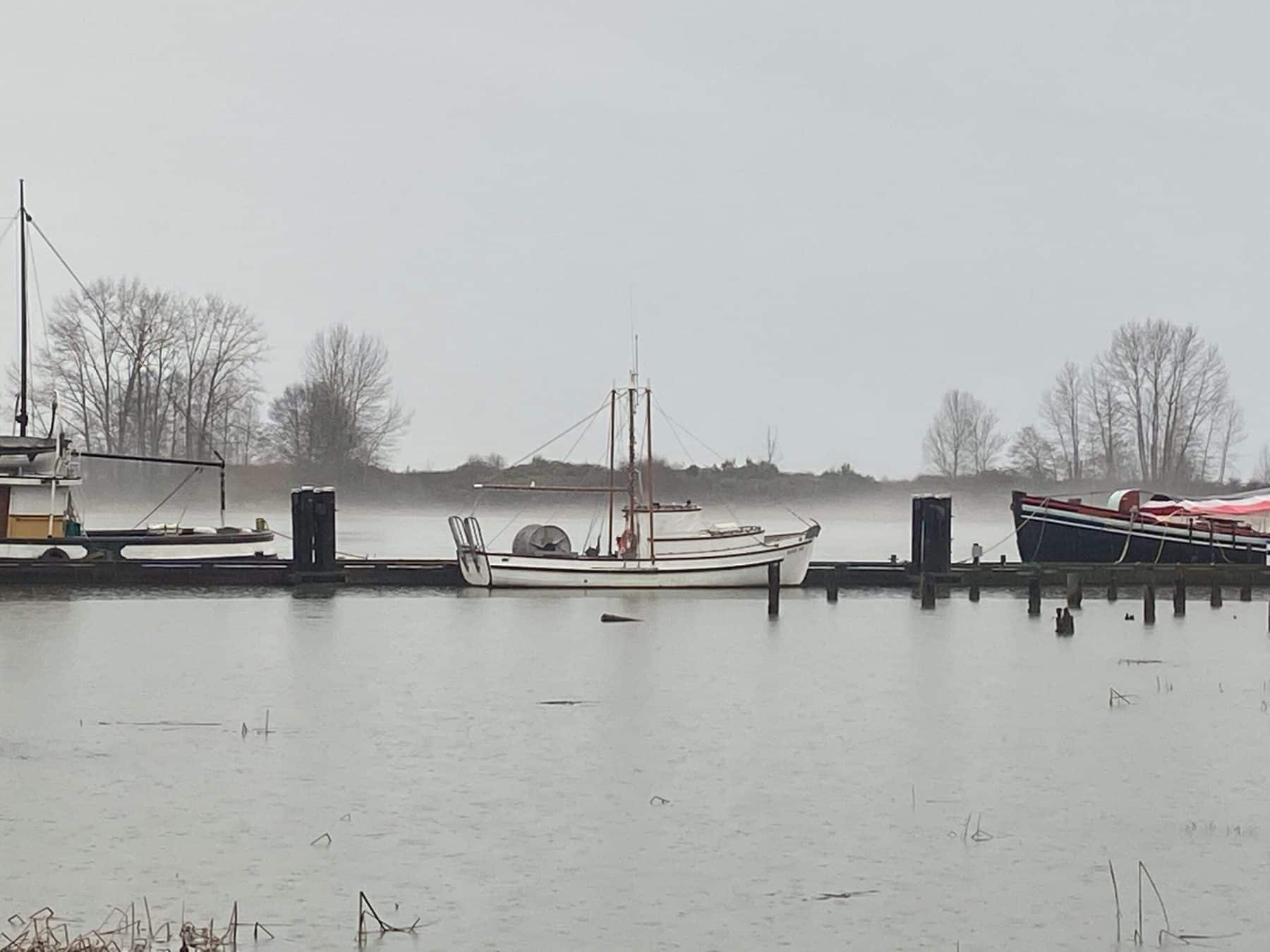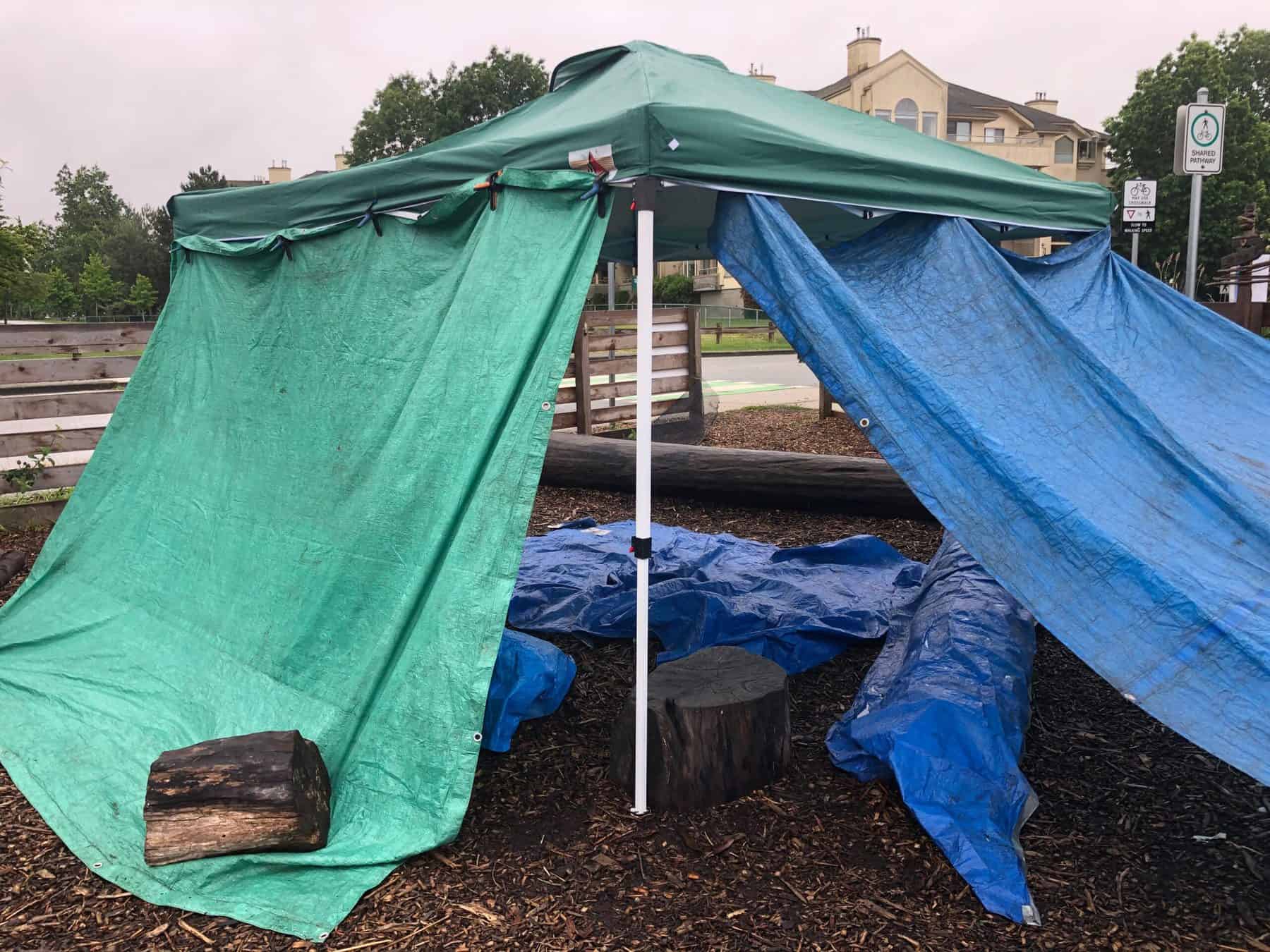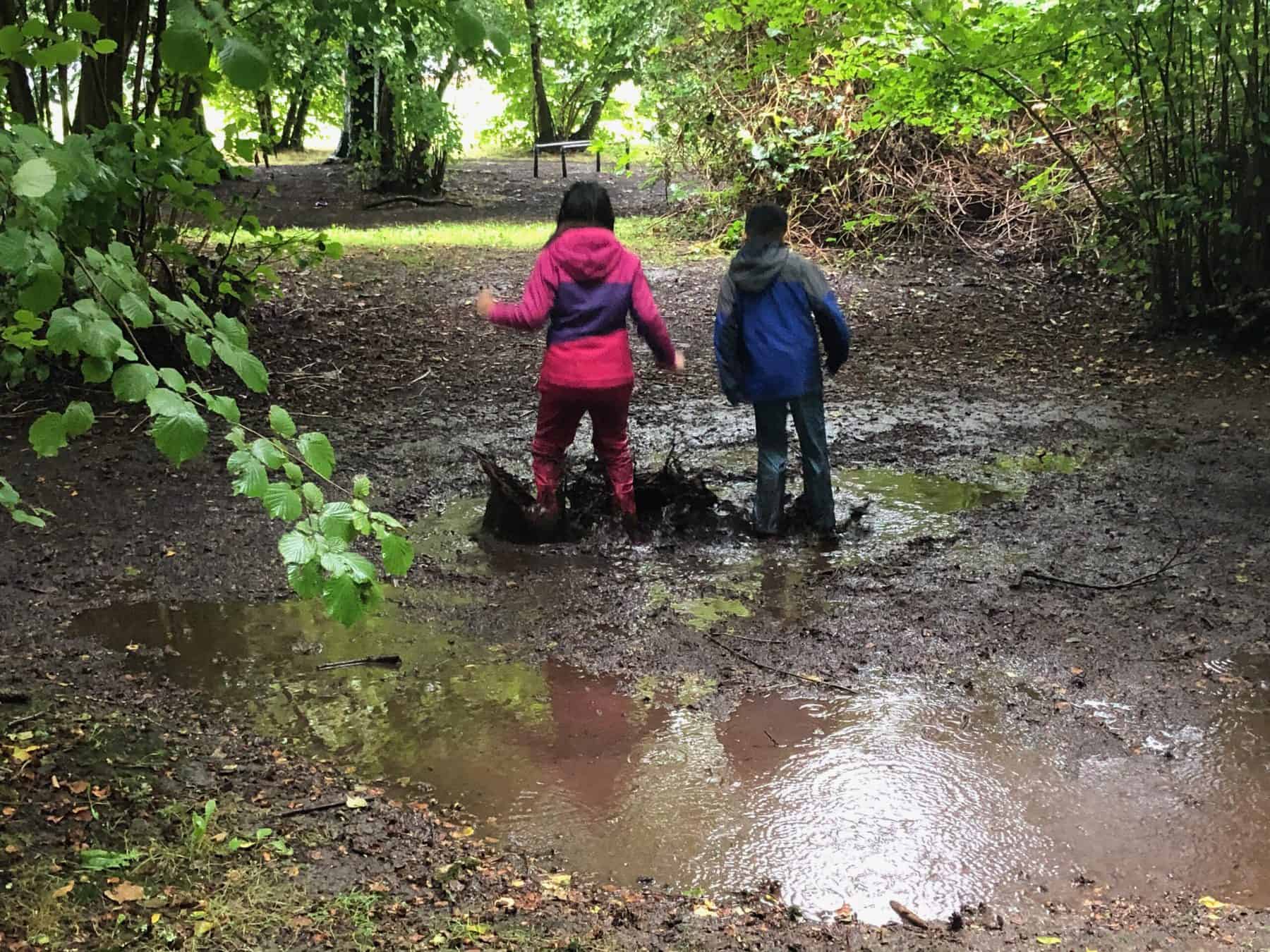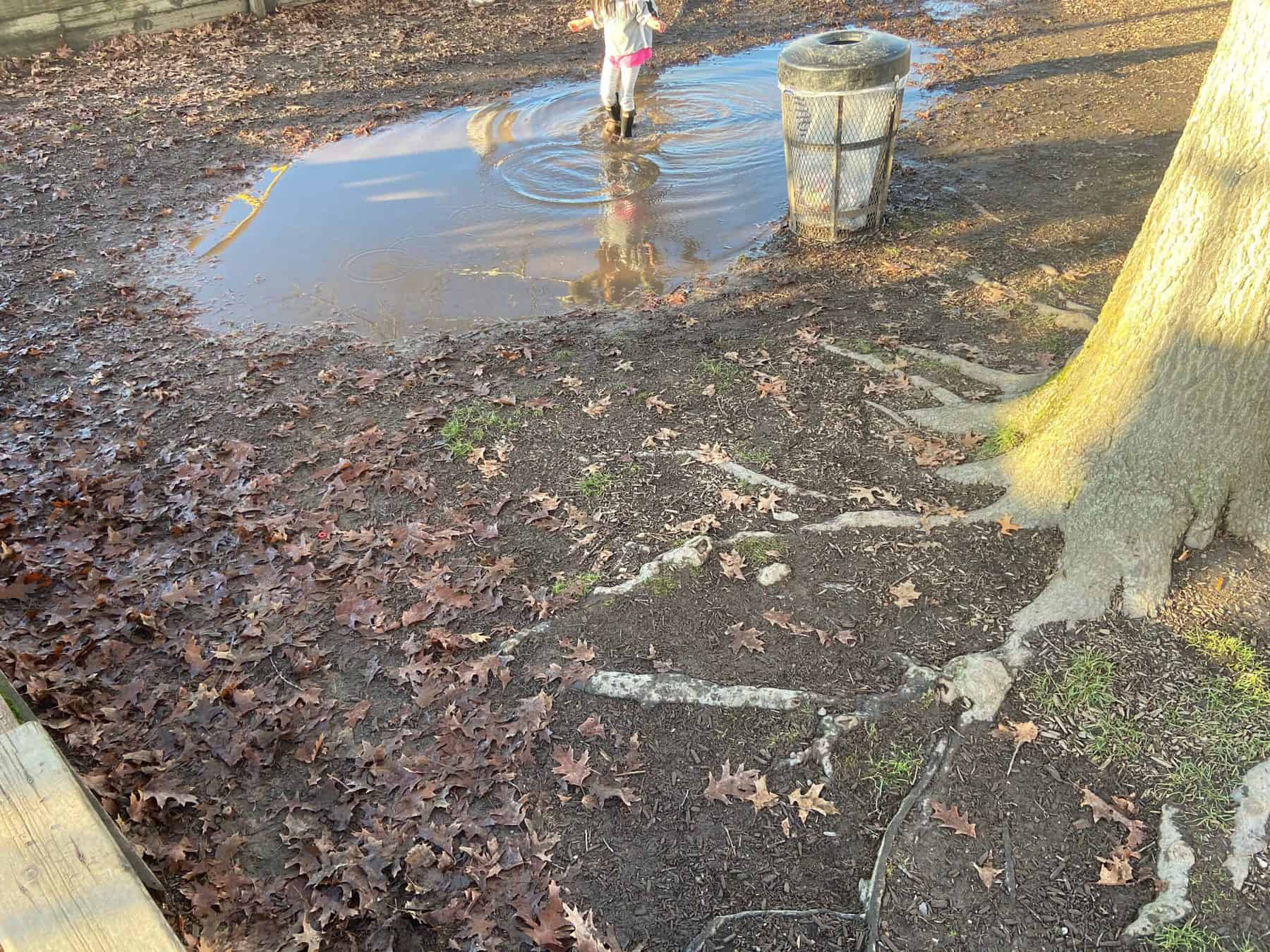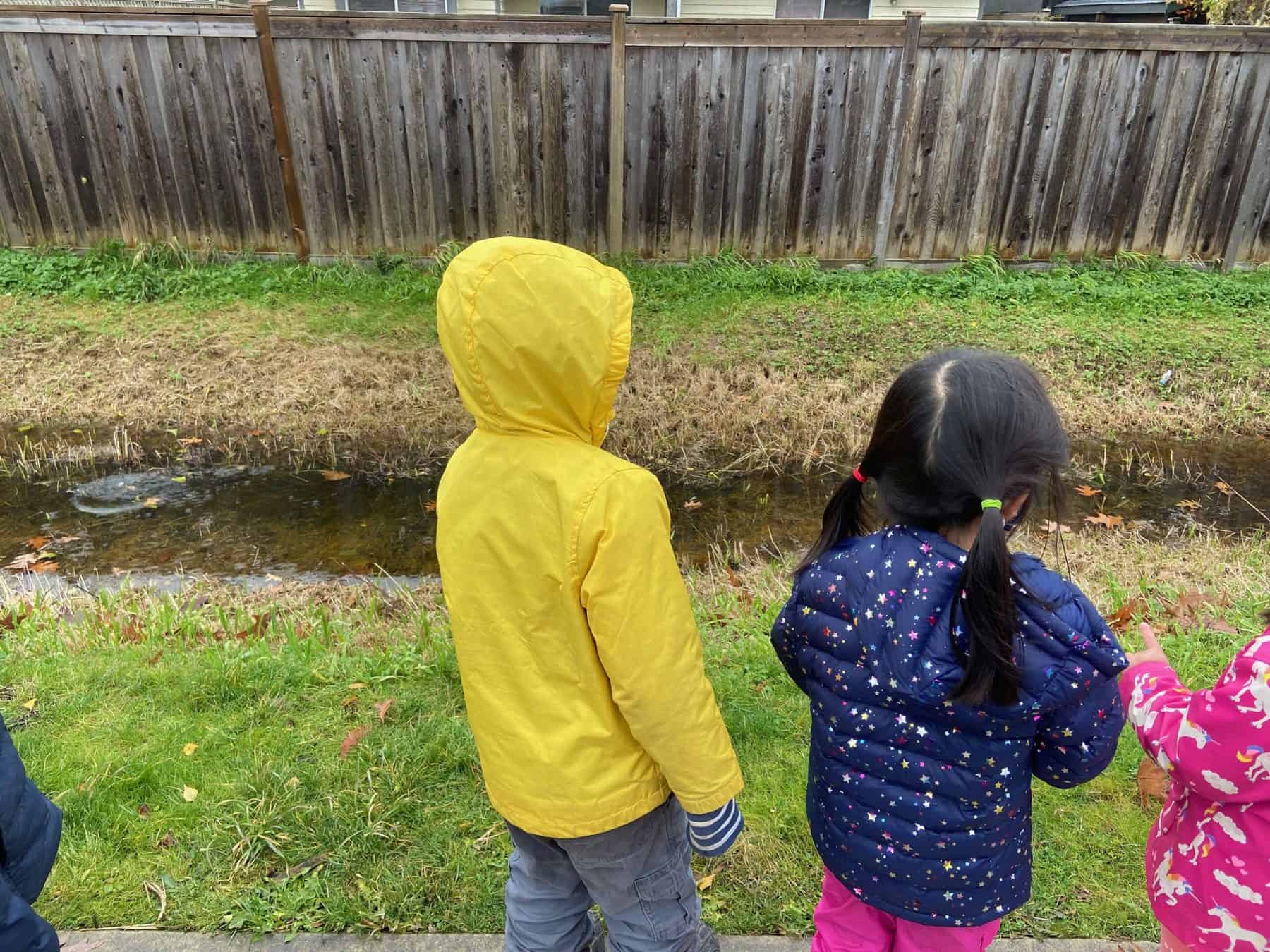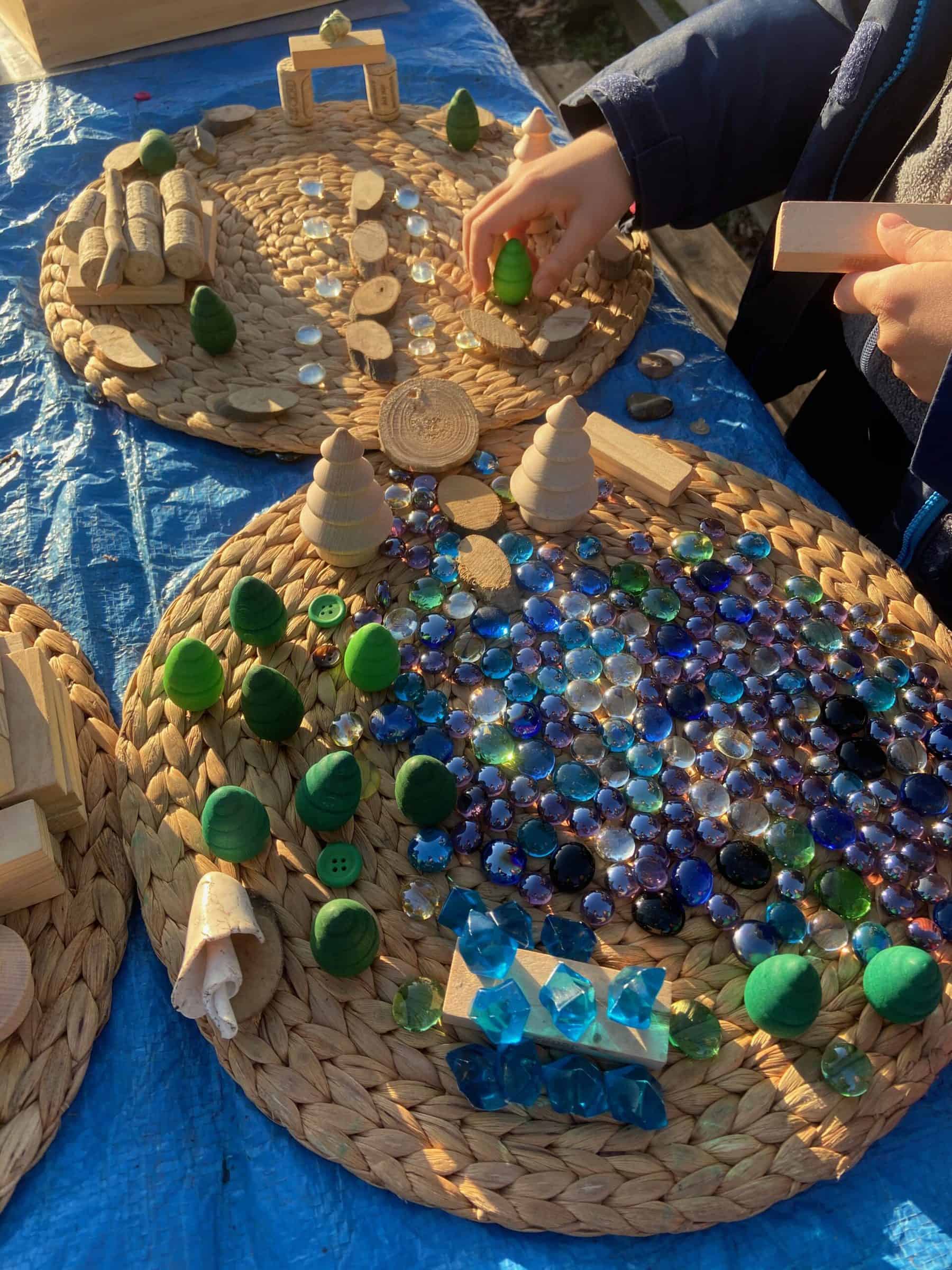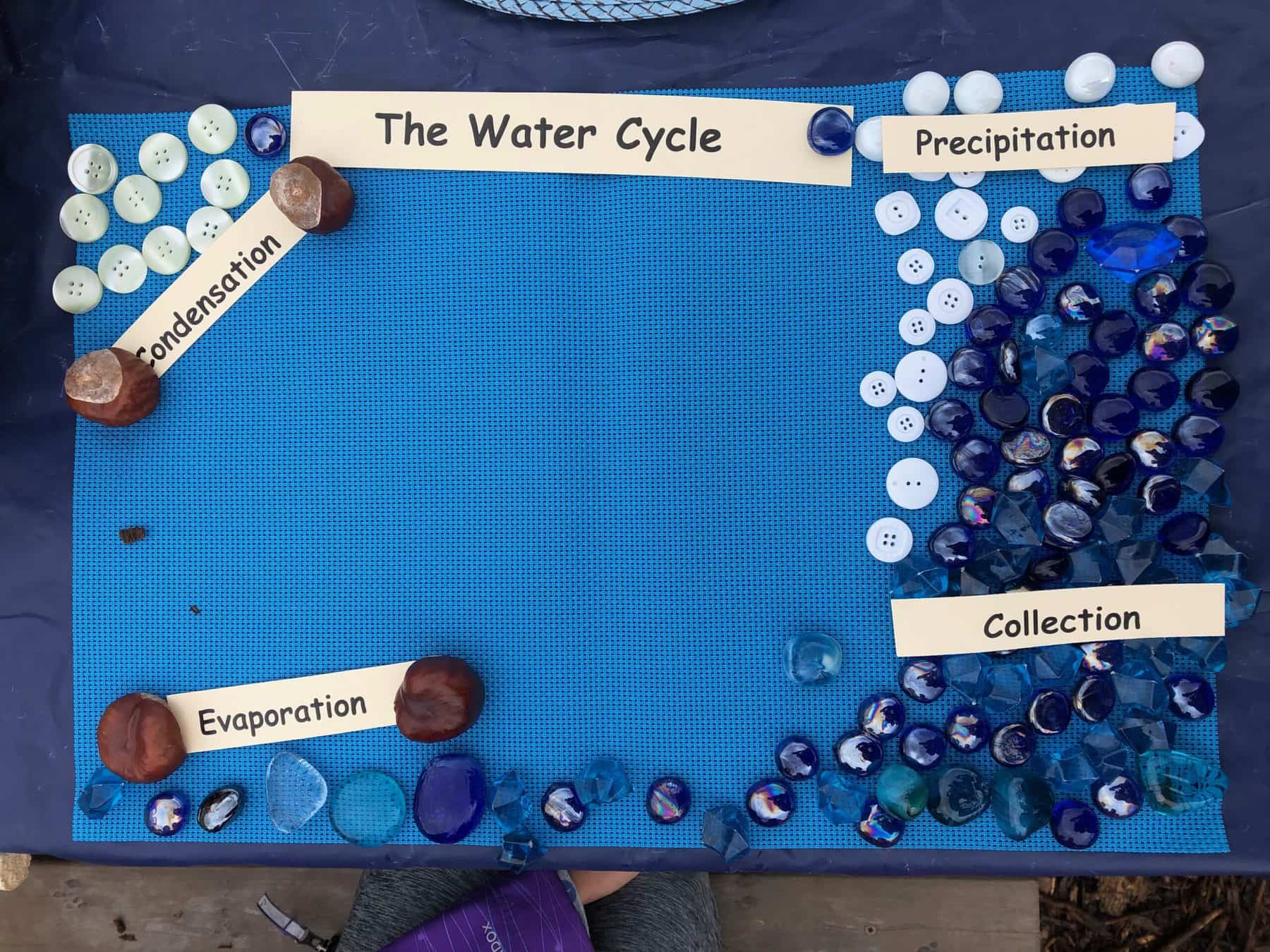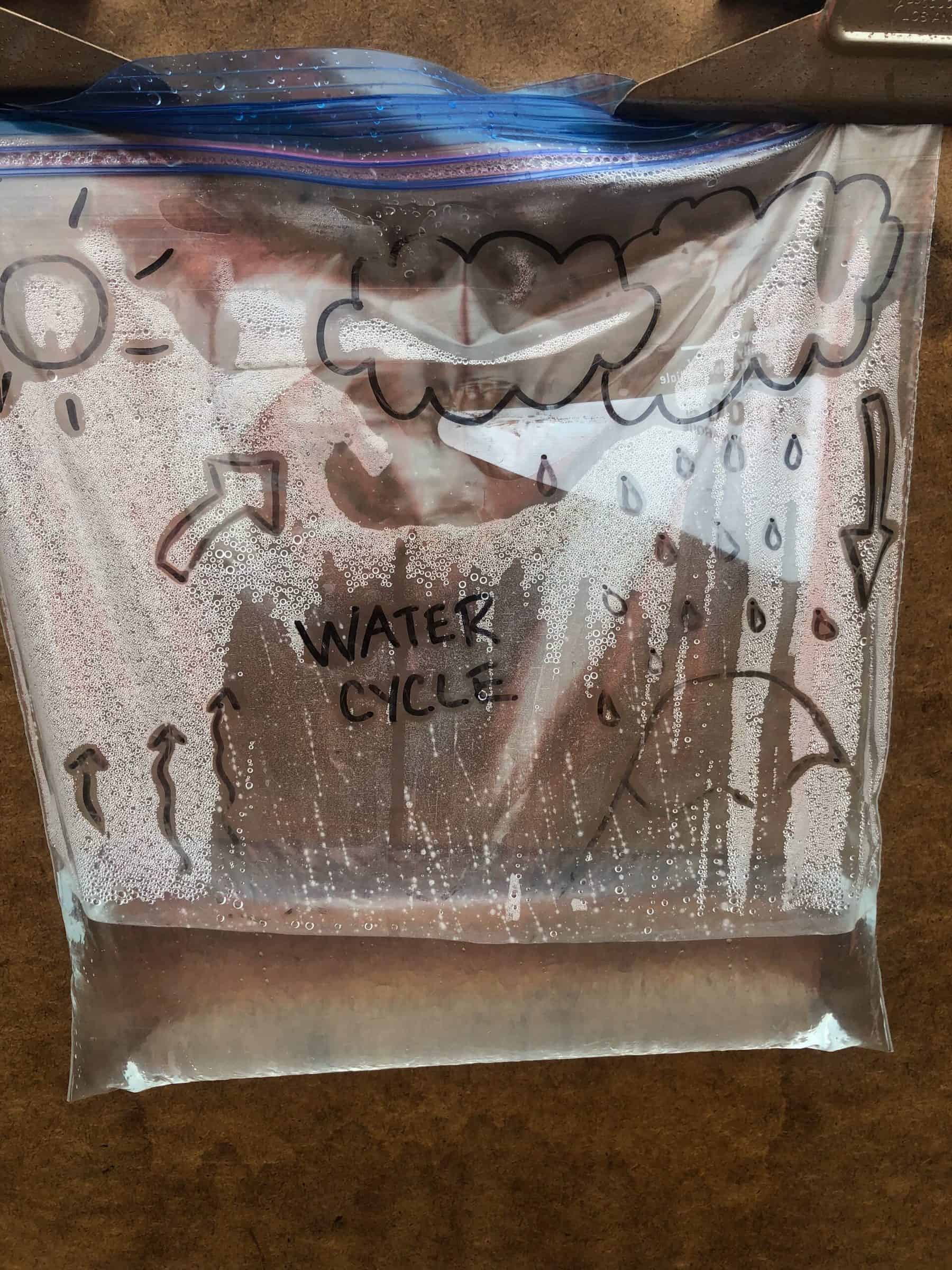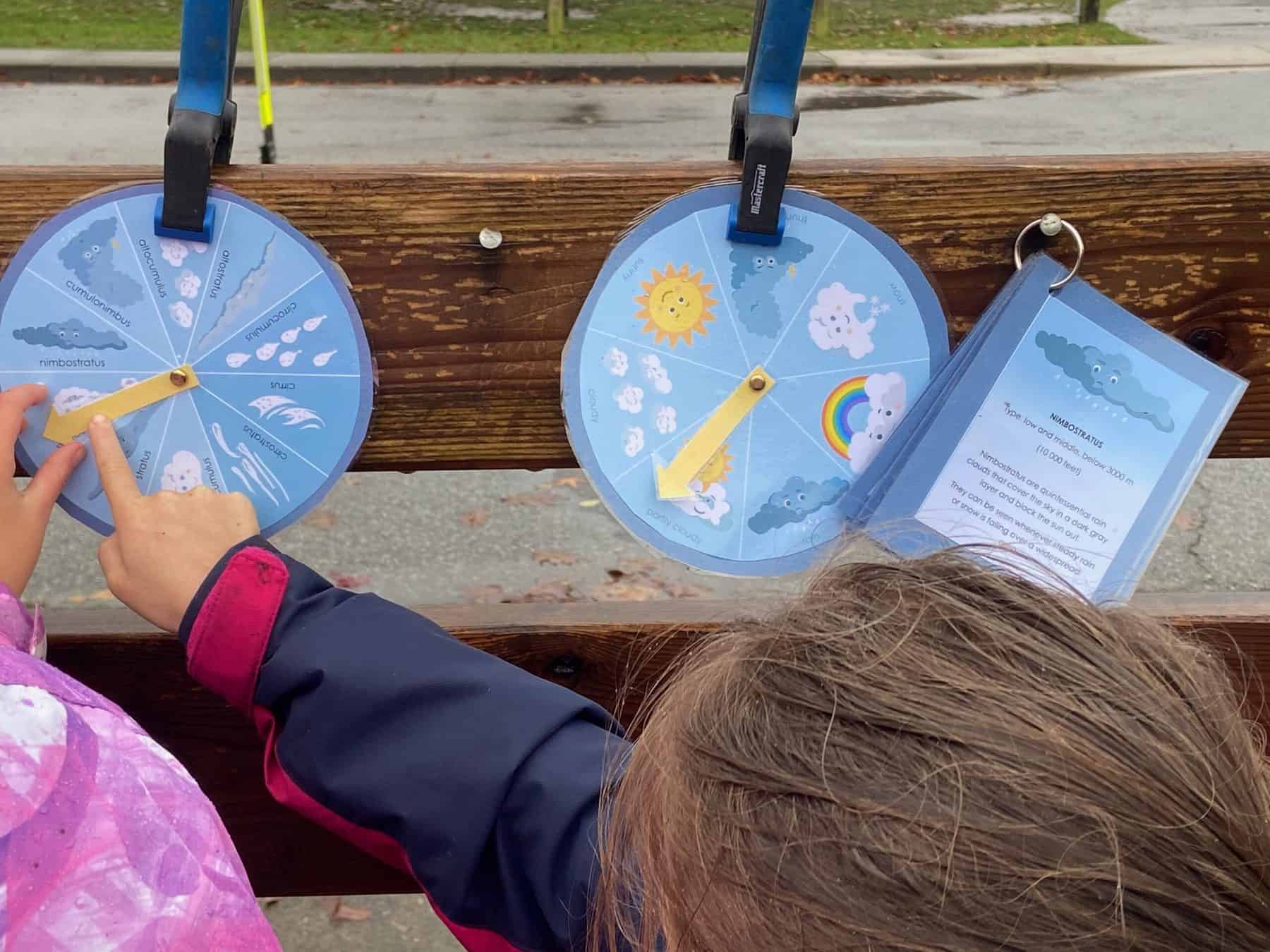- filed under: Science Outdoors
Water Cycle Inquiry
As a start, water cycles are best experienced, rather than read about. There is no worksheet that can fully capture the water cycle phenomenon, like being out in the rain in your community can. Encourage your class to dress like a scientist, and gear up for outdoor learning when you are starting your water cycle inquiry. If you need ideas for how to set up a lending library for rain gear, read this post with lots of tips on how we set up ours.
There are lots of big scientific words that kids need to learn when studying the water cycle. In my experience, the best way to get kids to really understand these words is to actually get right up close and into each part of the water cycle. Here are some ways to playful engage in water cycle learning and vocabulary.
Condensation Play
If you are lucky enough to live in a community that is close to sea level, you’ll have lots of opportunities for fog play. Fog is a perfect example of how the emergent curriculum affords rich learning in our school-yards. The fact is you can’t order up a foggy morning, but when they happen, be sure to keep your schedule flexible to take advantage of the learning that is being offered by the land. What a fun way to start the day by getting your kids out in the fog to experience what being inside condensation looks like, feels like, and sounds like! You can read how we made a game using trundle wheels to play in the fog here.
In our community, there are multiple opportunities to observe and experience fog. Here is a lovely view of the river behind our school, with fog along the shoreline during the month of December (while we stood in the pouring rain!). Where might you explore your community to find fog?
Precipitation play
If you live in a rainy climate, like we do, there is zero excuse for not just going outside to play in the rain. You can read more ideas go how to play in the rain in this blog post. One of my favourite ideas from this post is setting up a pop up tent, or tarp and reading a book aloud under the cover. And here is a list of my favourite books to read that celebrate rain across the seasons.
Simply walking in the rain offers children a chance to connect with your water cycle inquiry in ways they may not have before. If you are looking for ways to connect your walks in the rain with the curriculum, check out Gillian Judson’s Walking Curriculum here. Be sure to leave enough time to stomp in puddles, get messy and joyfully experience where water collects in your community!
Collection Play
Spend time exploring your community either in the rain, or after the rain has stopped and make note of where rain collects in your community. Puddles are easy, do you have drainage ditches or storm drains? Where do they lead? What do your students know about the water systems in their community and how rain water is managed in your municipality.
Where we live we have large ditches and always lots of puddles. The kids can’t play in the ditches when they are full of water, but they certainly can play in the puddles!
And don’t forget that sometimes water freezes where it collects! If you have a cold morning, be sure to head out to examine the ice that has formed!
Evaporation Play
This is fun to do on a warm morning or afternoon after the rain has stopped. Simply go on an evaporation hunt, and bring your magnifying lenses!
Water Cycle Inquiry Story Play
We often use loose parts for making learning visible through story play with students. There are many ways to do this. One is to add vocabulary cards to the materials to direct the play in a way that encourages sharing knowledge, the other is to simply provoke students to make their learning visible by asking them to show you what they know about the water cycle.
Another option is to draw out the water cycle on a ziplock bag and fill it with water. Leave it up on the side of a shed or on a fencepost and watch the condensation accumulate to create your very own water cycle in a bag! Kids enjoy playing with the water to remove the condensation, and then watching it accumulate and build back up. The drips down the side of the bag are strangely soothing for many kids to watch.
Further resources for outdoor explorations of the water cycle can be created or purchased and then laminated for use outdoors. This cloud resource was purchased from Adventures in a Box.
However you choose to playfully engage with the water cycle, be sure to try it outdoors! I guarantee your students will have a far better grasp of the vocabulary once they experienced the water cycle. Don’t forget to join me on Pinterest if you organize your ideas there. Lots of ideas from around the world on how to teach across the curriculum outdoors!

